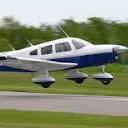kitplane01 wrote:muralir wrote:They are making these things. The Tejas Mk1, for all its warts, is now in production. That means things like avionics and the airframe are being produced. ...
You seem super focused on only the results as they stand today, with no allowance for the type of background infrastructural changes that will allow for faster and more advanced development in the future.
...
After 30 years of developing the Tejas MkI, their development pipeline looks like this:
* Tejas MkI -> in production
* Tejas MkIA -> production beginning in 2023/24
* Tejas MkII -> production beginning in 2026
* AMCA MkI -> first flight in 2025
After 30 years they have produced 34 airplanes. Airplanes the Air Force doesn' t want. Therefore I am focused on production.
Two questions:
1) Do you really think they will meet this schedule. Hint: If you say yes, I'll mention past history.
2) Is this really what they were hoping for? Is this really success as they would have defined it? Is it even close?
No, for 25 years they didn't produce any planes. Then they've produced 34 planes in the past 5 years. Currently, they're producing 5-8 planes a year. Moving forward, they plan to produce 16. The point is progress is being made. When you say 34 planes in 30 years, that implies that they're producing 1 plane/yr. If you're going to focus on current production, you should compare yearly rates. Pakistan's production rate for the JF-17 is ~25/yr (to the best of my knowledge; correct me if I'm wrong). So India is still behind, but is ramping up (as is Pakistan), and certainly nowhere as low as 34 planes in 30 years would imply.
The AF doesn't want MkI. Agreed. But they seem happy with the specs for Mk1A. Of course, it's not in production yet, and 2023 would be a very aggressive timeline for volume production. But they're not going to slip 30 years. Mk1->Mk1a is not some cleansheet development plan. It's not even a brand new production line (rather the Mk1 lines will be transitioned to Mk1a). So more like probably 1-2 years delay, for initial production starting in 2025, and volume production in 2026/27. That would be my best guess.
Given that the Mk2 appears to be proceeding on a parallel track (with a lot of stuff being developed in common for both Mk1a and Mk2), I think 2026 for initial production of Mk2 might actually be reasonable. If you believe HAL, they're starting metal cutting and tooling this year, with prototypes planned for next year. Of course, operational clearance can take several years, so even if they start flight tests in 2022/23, that might not guarantee production and induction by 2026. But again, I don't think the delay is going to be 30 years.
The AMCA, and the naval variant, are, IMHO, still pie-in-the-sky. I don't think their development is close to being finished, so yeah, I doubt their timelines (you'll notice I didn't even bother listing their expected timeline for the naval variant
2) Is this really what they were hoping for?
No, of course not. Is anyone ever happy with their fighter program? Tell me the US is happy with the JSF. Or the F22 before it. Or the Osprey. Heck, even something as simple as their tanker, basically a 767 with extra fuel tanks, is mired in delays and cost overruns. Everyone would love a 10thgen fighter that costs $1million that has Wonder Woman's cloak of invisibility and Austin Powers' sharks with laser beams attached
The JF-17 seems to have been quite successful in achieving Pakistan's objectives, which I would argue were to have a good fighter while developing indigenous manufacturing capability (without, notably, any real design or development capability).
The Tejas has been less successful in achieving India's objectives: the initial Mk1 fighter did not meet IAF requirements, and the development took far longer than expected. But India's objectives with Tejas were far more ambitious than Pakistan's. And if you compare the actual achievements, I do think that India has achieved more than Pakistan, because it *has* kick-started their indigenous aerospace industry, and their development and design capability. Let me ask you this: for all of the Tejas's flaws, do you think Pakistan would like to have the design capability that India has developed with Tejas? I'm not saying they'd trade the JF-17 for it, but it is something of immense value.
I would say the sticking point is this: Pakistan achieved its goals quite well on a far more limited program, while India did less well in achieving its goals on a far more ambitious program. So who "succeeded"? Pakistan, that set its goals lower and met them, or India, that set its goals higher, didn't meet them, but still (I'd argue), met a higher set of goals than Pakistan's program? (Please note, I'm not trying to denigrate the JF-17 program by calling its goals more limited. I think Pakistan was right in setting their goals where they did).
Again, I think the true apples-to-apples program comparison is the JF-17 and the Su30. Both had more limited goals of indigenous manufacturing, with limited design work, partnering with a more experienced country to "jointly" develop a fighter for their requirements based off a pre-existing platform. And both succeeded quite well. India's Su30 program was largely on time and on-budget, met IAF requirements, and manufacturing was gradually turned over to India. It's now 80% indigenously built (although designed largely by Russia), and is an important part of the IAF's force structure. Tejas was an entirely different beast.



